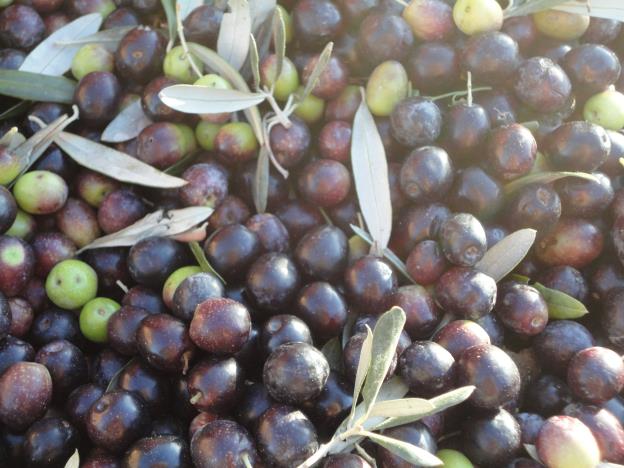At Dancing Ewe Farm in Granville, New York, Jody and Luisa Somers are perfecting the farm to table experience. What exactly does that mean in the lives of this couple, their family, and their extended family? Come and meet the dynamic people producing Dancing Ewe olive oil available for purchase in The Savory Pantry.
When I received Luisa’s “Buongiorno!” email and heard her possessing accent over the phone, I was dreamy-eyed to learn much more about how this Tuscan woman found herself a farmer in upstate New York. “I grew up with it,” Luisa started brightly. “Father and mother had our farm in Manciano and their parents also had farms. I grew up with 60–100 sheep, rabbits, pigs, chickens, dogs, cats . . . and a turtle! For crops we had a vineyard with enough grapes to produce wine for our family and 60 olive trees to produce olive oil for our family. My sisters and parents and I would harvest my grandparents' olive trees as well. During harvest time—which used to be November but has been moving earlier for the past ten years or so and is now in October—my sisters, parents, and I would set to work. I was the youngest, and therefore the princess, and didn’t have to work quite as hard as my sisters! We’d head to the trees with a picnic lunch and harvest from 9 or 9:30 in the morning until 4:30 or 5 in the evening. We’d pick the olives and then at the end of the day, father would go around with a tractor to gather the crates. After two or three days of work, the frantoio would process the olives and we’d have enough to last the whole year, plus a little extra to save in case the next year’s harvest wasn’t so good.”
So perhaps it makes sense that Luisa would continue her family traditions in Italy, but New York? It ends up that her three week visit to America twelve years ago—which included staying at her friend Jody’s then newly purchased run-down farm—took an unexpected, romantic turn. Fast forward to 2016, and they now have a three-year-old son and a beautiful, working farm on that same property which reflects Luisa’s Italian heritage, Jody’s expertise from his experience in large animal veterinary medicine, and the couple’s shared curiosity for learning how to deliver the best from the farm to the table in the Italian tradition.
Deepening their upstate New York to Tuscany ties, Luisa shared, “When I moved to New York in 2005, I was really missing the olive oil. Olive oil is such a new concept for America for the most part, at least in New York, because butter is so popular. There is bread and butter at the dinner table. Here, no one could match that taste of my childhood with anything. So when I traveled back to Italy, I’d fill a bottle with olive oil from my mother’s house and smuggle it over in my suitcase. Over the years, friends were able to try it and they all said, ‘Wow! This is completely different from what we have in the grocery store! Friends became interested in getting more from Italy, and we thought, why don’t we go there, harvest it ourselves, bottle it under our label, and sell it here? So many people don’t want to harvest their own olives anymore because it’s tough work and it’s hard to find help. So we started roping in family members. We started with my uncle, moved to my cousin, and now my brother-in-law is involved as well. My mother had to sell our family farm when my father passed away, but it is now owned by a family who uses it as a villa, and still allows us to harvest the olives in exchange for a year’s oil for their family.”
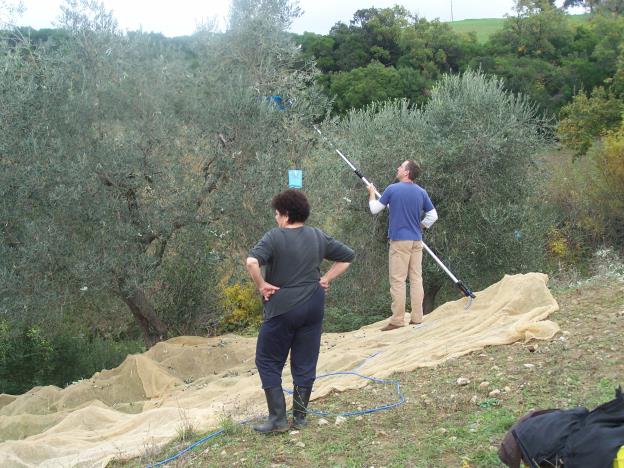
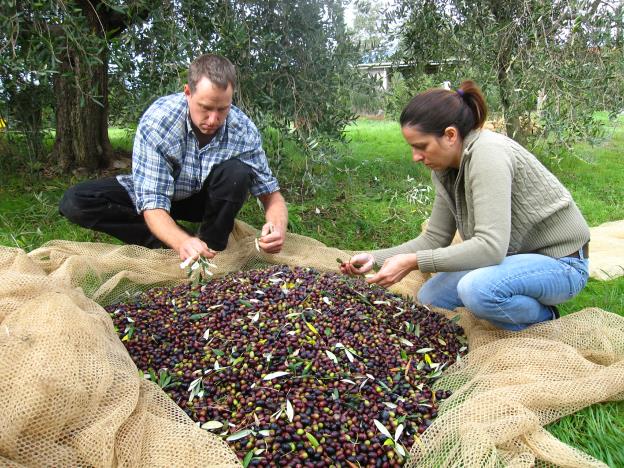
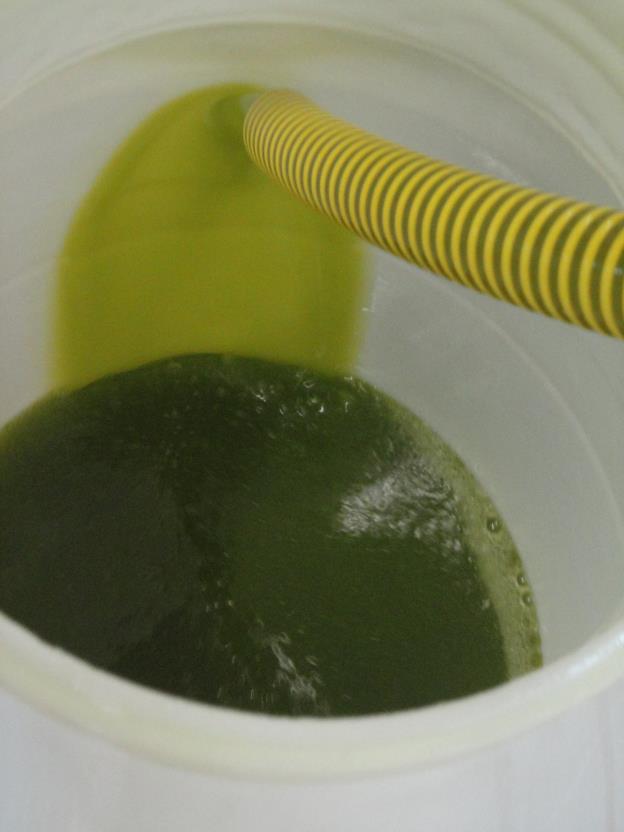
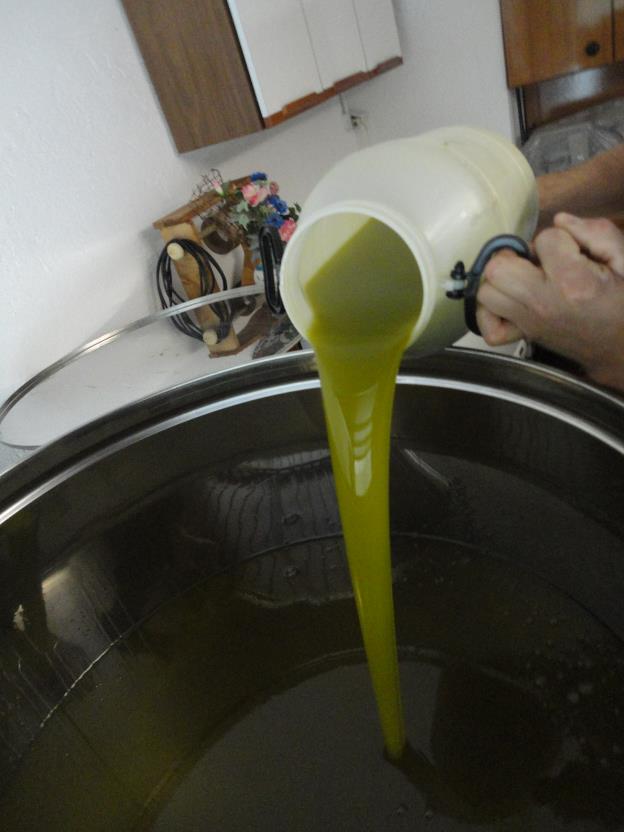
After using a “rastrello”—a telescoping arm with a gently clapping hand at one end that gently knocks the olives from their sometimes 100-year-old branches—the olives are taken within hours to the “frantoio,” the olive mill, to be cold pressed before their chemical makeup is transformed, impacting the taste. Following each year’s harvest, the couple returns to New York to continue life and work at Dancing Ewe. Meanwhile, the small batch of 2,500 to 3,000 bottles of olive oil that result from their labors is labeled and shipped to a port in New Jersey, where the Somers will greet it.
Curious how many olives it takes to make a single bottle of oil? According to Luisa, 1 crate of olives weighs about 20 kilos (40 lbs) and will make about 4 bottles of olive oil. To this lay person, that seems like a lot of rastrello clapping, and I begin to understand why the old adage, "You get what you pay for" applies readily to quality olive oils.
If you find yourself in Upstate New York, you can visit Dancing Ewe for one of their weekly lunches or dinners, and even enjoy cooking classes in which they demonstrate how using the best, farm fresh ingredients makes cooking simple. “Once you get the American mind off of needing so many ingredients to make something better, and you return to simple ingredients, and you see how good it is, you don’t need to go back. Olive oil, garlic, maybe salt and pepper—these are all you need to make something taste good. You don’t want to mask flavors of quality ingredients; you want to let the quality shine. Recipes in my cooking classes produce this reaction: ‘Wow I didn’t know you could make something this good with so few ingredients!’ Good, healthy cooking doesn’t have to be hard or terribly time consuming. Our meals are nothing fancy or pretentious. I’m not a trained chef. It’s like going over to a friend’s house for dinner.”
Upstate New Yorkers have responded strongly to Dancing Ewe, and the Somers have cultivated quite a following. In fact, Dancing Ewe oils are incorporated into another product sold in The Savory Pantry, Augie Treats Original and Sunny Day Granolas—quite possibly the best granola you’ll ever taste. When I asked Luisa why she believed that customers return for more, she said, “It is something to know and feel like you can trust the people that make your food from the beginning to the end.” And indeed, we’re glad we can.
Luisa’s Advice on Tasting Olive Oil
Either
(1) Trust the person selling you the olive oil, or
(2) Trust your palette to tell you what tastes good and pure and right
Regarding color, Luisa says, “Many people are in search of the green oil because it is so dark and appealing, but it simply doesn’t stay that way. Even within a week of bottling, it’s going to begin to change. Believe me, I love it! I love the spiciness of the fresh oil. But there’s no good way to preserve that taste entirely. That’s what makes it a special experience to be right there for the harvest. To not cloud your judgment regarding the color when you are doing a tasting, don’t let your eyes trick your brain. Put it over something dark because you are making a judgment based on color which isn’t always the best way. I always use a dark bread whose flavors I’m very familiar with so I can distinguish what is the taste of the bread and what is the taste of the oil.”
Tuscan Style Bruschetta
- Crusty Bread
- Raw Garlic Clove, sliced in half
- Dancing Ewe Current Harvest Olive Oil
Luisa’s Instructions: “In one hand, picture yourself having a slice of bread—crusty bread that is thick inside, cut about half an inch and roasted over the fire or in the oven until it is lightly browned. In the other, the clove of garlic. Brush the garlic across the bread. For me, once is perfect. For others, twice. Sprinkle some sea salt and then drizzle with olive oil from a spout purchased at an olive oil place or even from a liquor store. The salt amplifies the smells and taste of the oil. This is how we always do when we get the new oil.”





